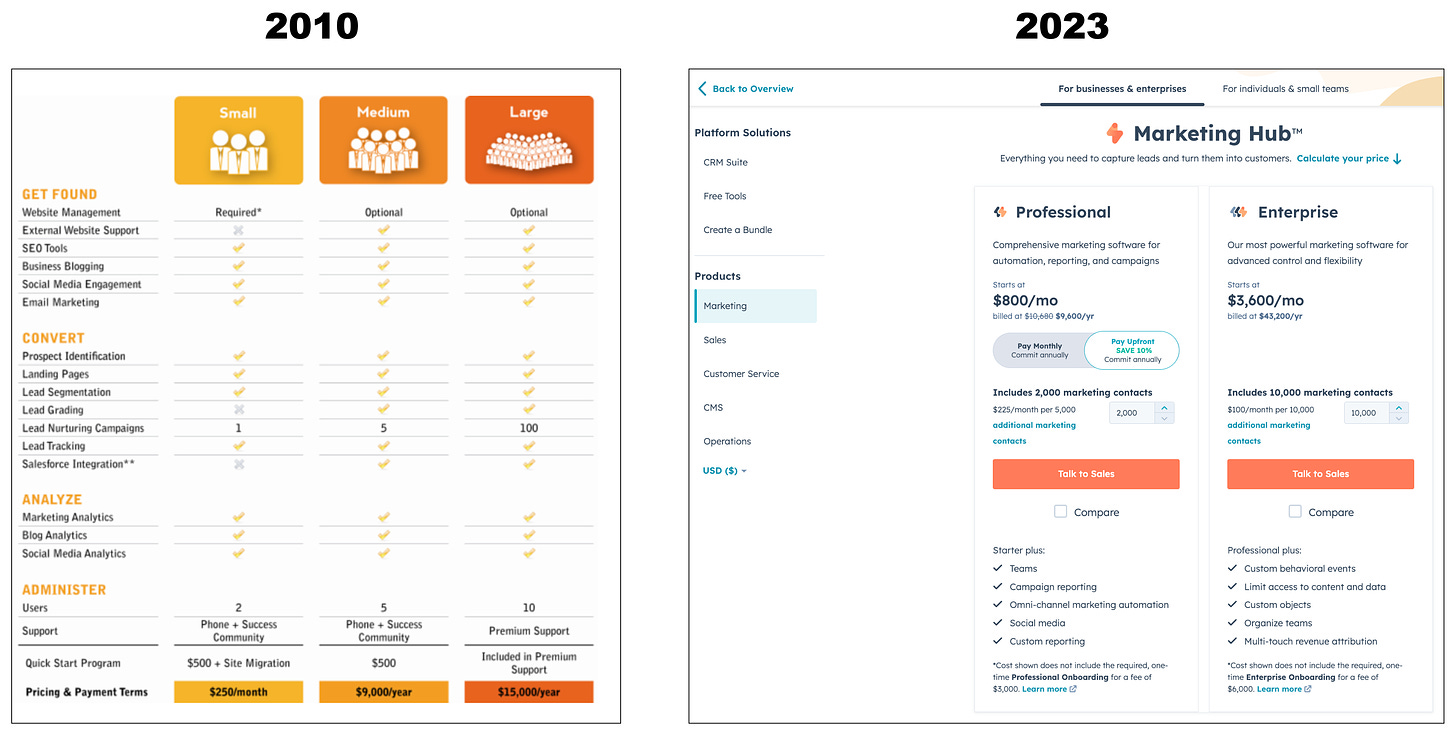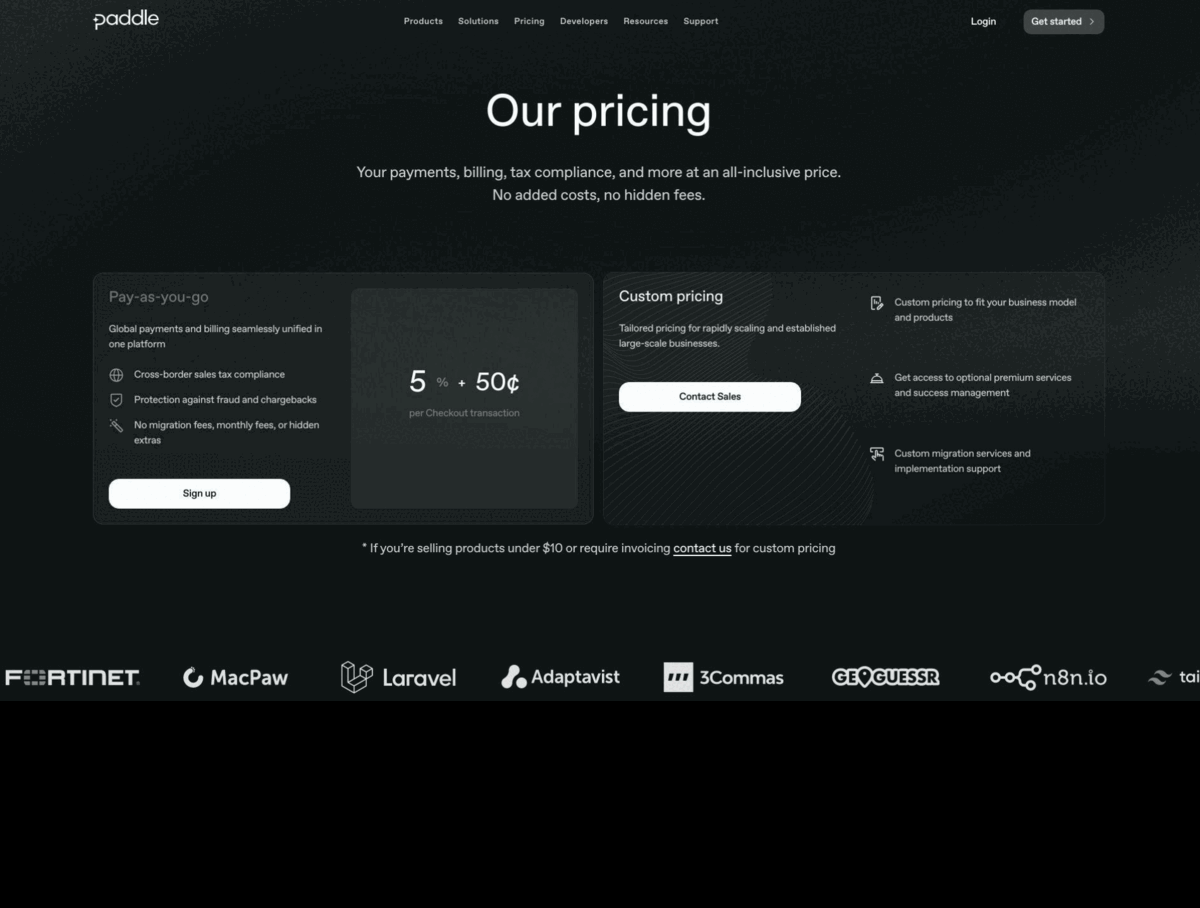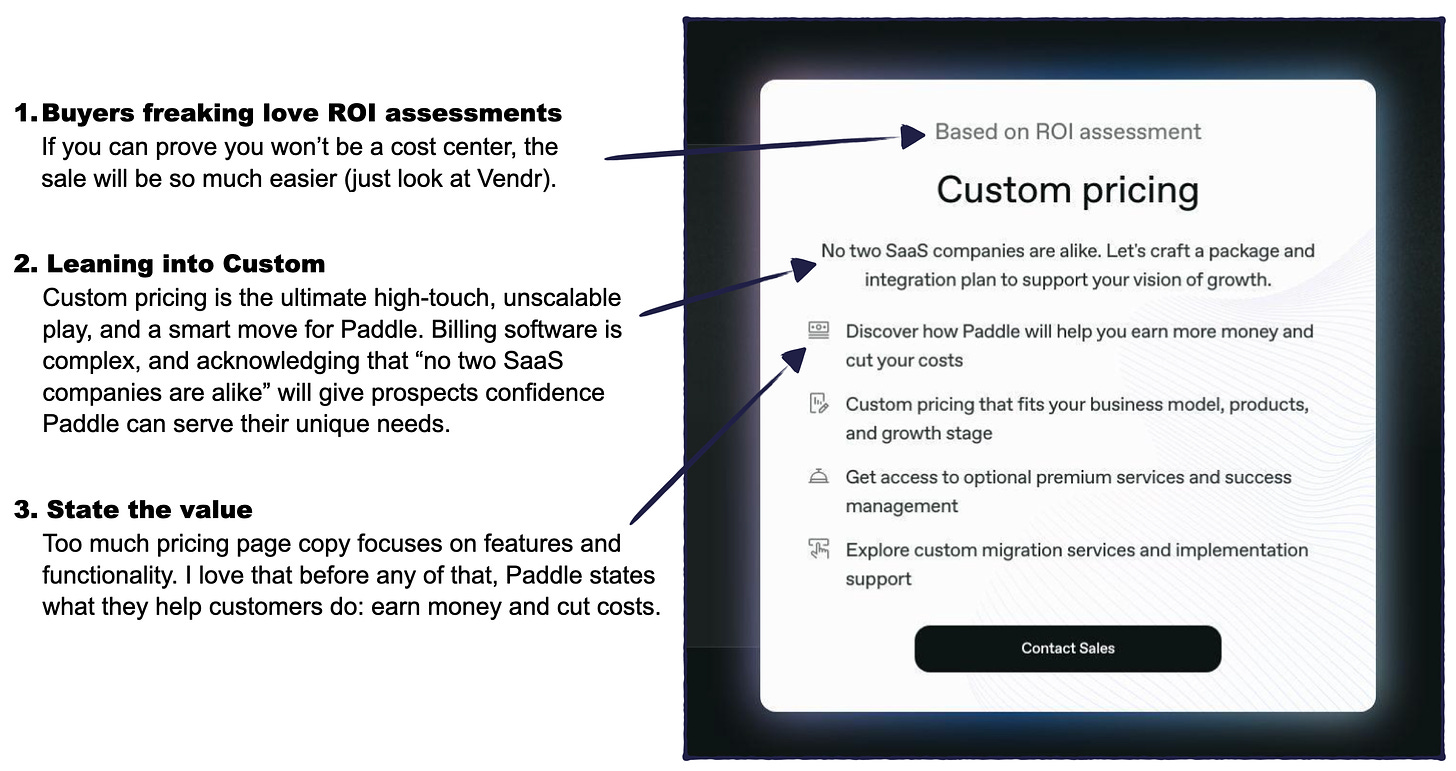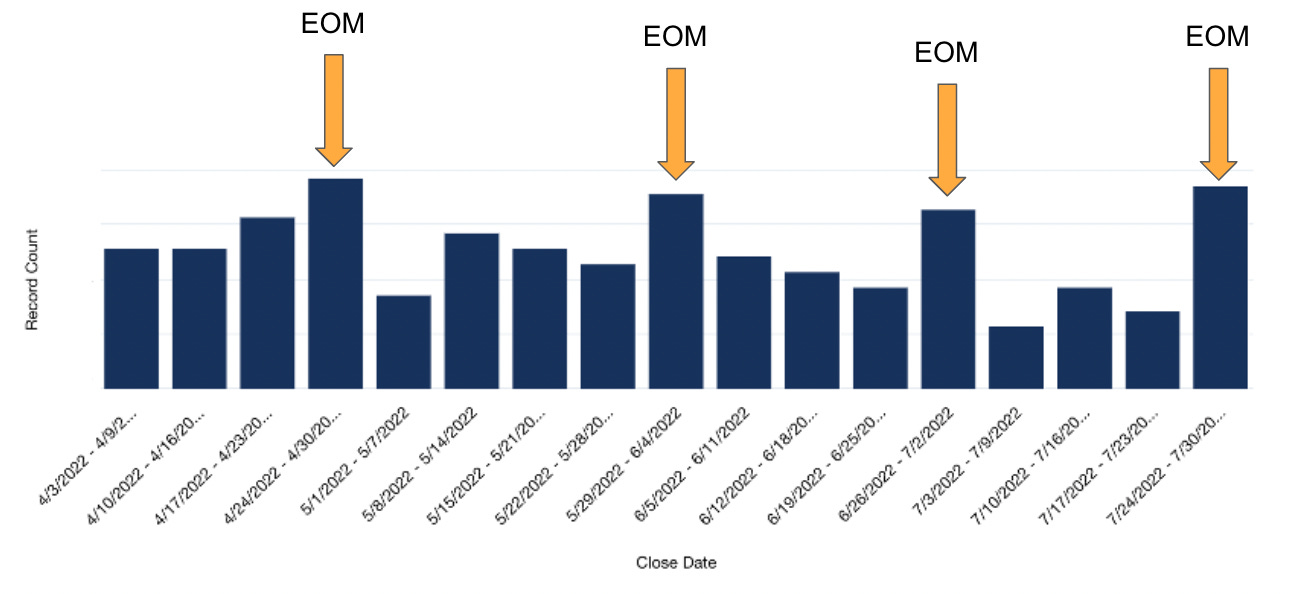SaaS Pricing is hard. PricingSaaS is your cheat code.
Monitor competitors, track real-time benchmarks, discover new strategies, and more.
Hubspot: A Pricing Story 📈
Pricing is where product meets strategy. The easiest way to see how a company’s product and GTM strategy have changed is to track their pricing page over time.
This week, I went to the archives to trace Hubspot’s pricing evolution from 2010 to present day. This was quite a transformation:
To get there, Hubspot went through the several pricing iterations:
2010: Flat rate pricing
2011: Usage tiers based on contacts
2012: 2-Part Tariff model with a base platform fee and variable fee for contacts
2013: 3-Part Tariff model with a base level of contacts included in the platform fee
2014: Freemium with the launch of Hubspot CRM
2016: Multi-product with CRM, Marketing, and Sales software
2018: Platform pricing, with bundle options
While their pricing hasn’t changed much since 2018, they’re still innovating with new models today. For example, Hubspot Payments charges a small transaction fee for any transactions that go through the system.
Over the years, Hubspot has used pricing to align with their ideal customer profile, push into new markets, and expand how customers use their products.
Read the full report below:
Positioning Refresh 🪧
Beyond features and price points, a pricing page is the perfect place to clearly position your brand to potential customers. And while you can position your company with price points and packaging strategy alone, powerful copy can bolster the cause.
With that in mind, I really like a recent pricing page update from the team at Paddle:
There are a few things I like about this positioning:
Lastly, I love the new contrast from of black to white. While I generally think a good visual aesthetic is a “nice to have”, I do love when a pricing page uses design to direct your eyes exactly where they need to be.
PS. I spotted this pricing change using PricingSaaS. Sign up to get alerts every time your competitors change their pricing page (track up to 3 competitors for free).
Links 🔗
There’s not a lot out there about SaaS pricing, at least relative to other topics — which is why I was excited to come across two articles this week that pushed my thinking:
1️⃣ A Primer on Power Law Pricing by Gary Bailey
Most everyone is familiar with The Pareto Principle (aka the 80/20 rule), but I had never seen it applied to SaaS pricing.
Gary breaks down how the demand curve and willingness to pay for a product follow a similar power law, and how that can help you estimate pricing tiers. He even uses Hubspot and Mailchimp as examples of companies that abide by power law pricing.
Not going to lie — this post blew my mind.
2️⃣ 6 reasons why you shouldn’t discount by Tom Rowe
I see a lot of back and forth about discounting, and feel like I’ve heard every side of the argument at this point.
What I had never seen is data that deal volume will still spike at the end of the month even if you don’t offer discounts. Tom uses real data from Chili Piper’s sales funnel to prove his case:
Highly recommend bookmarking both for weekend reading.
Thanks for reading! If you enjoyed this post, consider liking it, subscribing, or sharing with a friend so Substack shows me some love.







